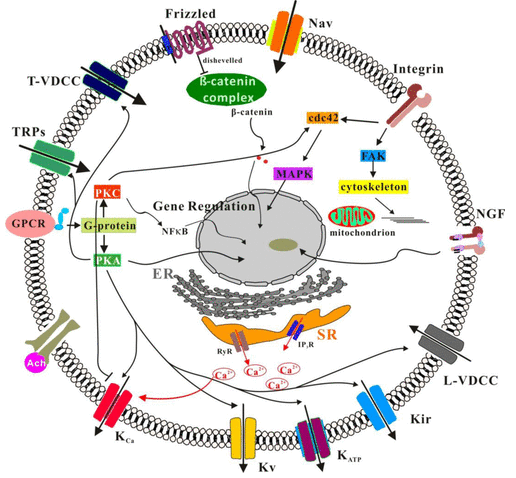- Home
-
Screening
- Ionic Screening Service
-
Ionic Screening Panel
- Ligand Gated Ion Channels
- Glycine Receptors
- 5-HT Receptors3
- Nicotinic Acetylcholine Receptors
- Ionotropic Glutamate-gated Receptors
- GABAa Receptors
- Cystic Fibrosis Transmembrane Conductance Regulators (CFTR)
- ATP gated P2X Channels
- Voltage-Gated Ion Channels
- Calcium Channels
- Chloride Channels
- Potassium Channels
- Sodium Channels
- ASICs
- TRP Channels
- Other Ion Channels
- Stable Cell Lines
- Cardiology
- Neurology
- Ophthalmology
-
Platform
-
Experiment Systems
- Xenopus Oocyte Screening Model
- Acute Isolated Cardiomyocytes
- Acute Dissociated Neurons
- Primary Cultured Neurons
- Cultured Neuronal Cell Lines
- iPSC-derived Cardiomyocytes/Neurons
- Acute/Cultured Organotypic Brain Slices
- Oxygen Glucose Deprivation Model
- 3D Cell Culture
- iPSC-derived Neurons
- Isolation and culture of neural stem/progenitor cells
- Animal Models
- Techinques
- Resource
- Equipment
-
Experiment Systems
- Order
- Careers
Ion Channel Blockers
The ion channel superfamily plays central functional role in human physiology, and represents an attractive potential target class for drug discovery. The functional role is that ion channel mediates communication between cells. A number of diseases occur when ion channels do not function properly, like diabetes, neuropathic pain, cardiovascular diseases, asthma, epilepsy, and neurodegenerative disease, etc.
Channel blocking is conducted by different types of molecules, such as cations, anions, amino acids, and other chemicals, which act as ion channel antagonists in regulating physiological response. Many different types of organic compounds can cause channel block as long as binding to some portion of the target channel's pore. Tools such as electrophysiology have been essential in locating the binding sites of open channel block molecules. Electrophysiology is an important tool in identifying channel structure. It is critical to understanding the inhibiting actions between ion channel and channel block molecules.

Figure 1 Overview of Ionic Channels (Jun Cheng, et al. 2019)
Potassium Channels Blockers
The primary role of potassium channels in cardiac action potentials is cell repolarization. Potassium channel blockers used in the treatment of cardiac arrhythmia are classified as class III antiarrhythmic agents according to the Vaughan-Williams classification scheme. Channel block induced by these agents leads to an increase in action potential duration and an increase in the effective refractory period (ERP). By increasing the ERP, these channel blockers are very useful in suppressing tachyarrhythmias caused by reentry mechanisms.
Sodium Channels Blockers
Sodium channels, which are essential to the production of action potentials, are affected by many different toxins. Sodium channel blockers, a class of potent compounds that act by inhibition of sodium influx through cell membranes. Blockade of sodium channels slows the rate and amplitude of initial rapid depolarization, reduces cell excitability, and reduces conduction velocity.
Calcium Channel Blockers
Calcium channel blockers (CCB), are a group of medications that disrupt the movement of calcium (Ca2+) through calcium channels, which are usually used as antihypertensive drugs against large vessel stiffness. CCBs can be also used to alter heart rate. There are two main classes of calcium channel blockers, Dihydropyridine(DHP) and Non-dihydropyridine. The former group is often used to reduce systemic vascular resistance and arterial pressure. The latter group includes Phenylalkylamine, Benzothiazepine and others. Various neurodegenerative diseases have been associated with excessive NMDA receptor activation. Many different NMDA antagonists and their therapeutic efficacy have been examined by researchers as a treatment option for calcium dependent neurotoxicity.
Chloride Channel Blockers
Chloride channels are involved in a wide range of biological functions, especially in a diverse set of functions in normal physiology and acquired diseases. This type of ion channels represents a relatively under-explored target class for drug discovery. Main Chloride channels blockers are targeting CFTR, CaCCs, and ClC-type chloride channels, as well as ligand-gated and volume-sensitive chloride channels.
The Ion Channel Inhibitor Compound Library provided by Creative Bioarray contains enough compounds targeting ion channels, and can be used for research in ion channel, high throughput screening and high content screening for research in ion channels-related diseases and ion channel drug discovery.
Highlights
- Bioactivity and safety confirmed by pre-clinical research and clinical trials.
- Targets include potassium channel, calcium channel, sodium channel, Proton pump, etc.
- Structurally diverse, medicinally active, and cell permeable.
- NMR and HPLC validated to ensure high purity and quality.
Packaging and Storage
- Powder or pre-dissolved DMSO solutions in 96 well plate
- Shipped with dry ice.
Creative Bioarray provides life science researchers tools for Pharmacological research, drug discovery, high content screening and high throughput screening. We are dedicated to be A Compound Screening Expert and would like to be a sincere and trustworthy partner for you.
References
- Lipton SA (January 2004). "Failures and successes of NMDA receptor antagonists: molecular basis for the use of open-channel blockers like memantine in the treatment of acute and chronic neurologic insults". NeuroRx. Neuroprotection. 1 (1): 101-10.
- Verkman AS, Galietta LJ. Chloride channels as drug targets. Nat Rev Drug Discov. 2009;8(2):153-171.
Related Section
Inquiry

